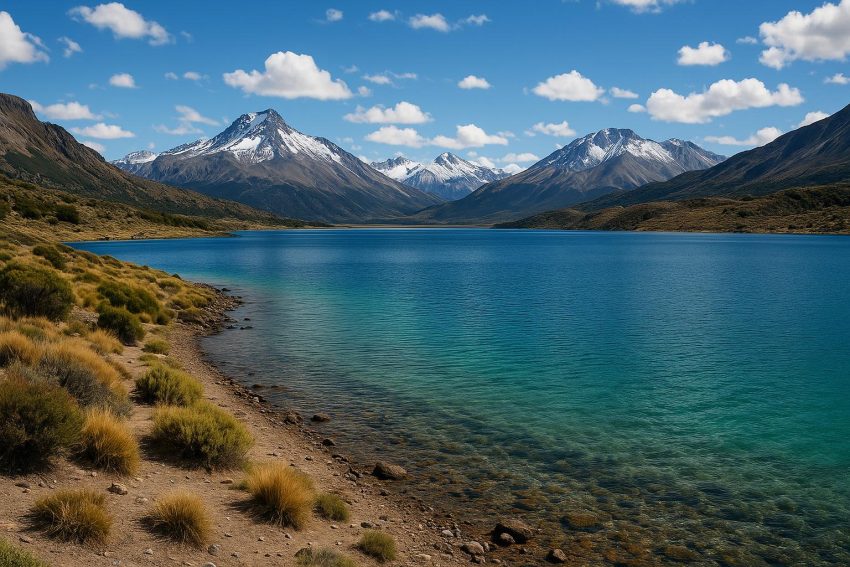Location and Overview
Laguna Blanca National Park, nestled in the Neuquén Province of Argentina, boasts a rich history and diverse ecological significance. The park, established in 1940, spans an area of around 11,250 hectares. Its creation was chiefly motivated by the need to preserve the unique bird species and maintain the biodiversity that characterizes this captivating landscape. As one traverses the park, they find themselves enveloped by the scenic beauty and natural wonders that have, for decades, attracted nature enthusiasts and researchers alike.
Geography and Climate
Laguna Blanca National Park is renowned for its varied geography, which is marked by volcanic formations intertwined with the semi-arid steppe. This diverse topography not only adds to the park’s aesthetic appeal but also plays a crucial role in shaping its ecological habitats. A centerpiece of this landscape is Laguna Blanca itself, a saltwater lake that stands out for both its picturesque allure and its environmental importance.
The climate of the region greatly influences the park’s natural environment. It is predominantly dry, experiencing cold winters that often see a blanket of snow covering the landscape, contrasting with the mild, sometimes warm, summers. This climate plays a significant role in determining the types of flora and fauna that thrive in the park, creating a unique blend of wildlife adapted to these conditions.
Flora and Fauna
The flora of Laguna Blanca National Park is predominantly composed of shrubs and grasses. These plants have evolved to survive the arid environment, often featuring sparse but efficient water-use adaptations. Though the flora might appear humble compared to other lush ecosystems, the wide range of plant species plays a critical role in sustaining the park’s animal life.
The park is a haven for a myriad of fauna, particularly known for its bird species. Enthusiasts and researchers frequent the park to observe the Andean flamingo, a striking bird that graces the waters of Laguna Blanca. In addition to flamingos, visitors can spot an array of ducks and coots who find refuge and sustenance within the park’s boundaries. The park is not only home to avian life but also to mammals such as the guanaco, a wild camelid, and the native fox, both of which roam the grasslands and rocky terrains.
Birdwatching Opportunities
Birdwatching at Laguna Blanca National Park is legendary, with the park earning a reputation as one of the prime destinations for ornithologists and avian enthusiasts. The lake itself serves as a crucial nesting and feeding ground, where many migratory birds pause during their long journeys, while resident species take advantage of the abundant resources all year long.
For those interested in experiencing the park’s birdlife at its peak, spring and summer provide the most rewarding seasons. During these times, the park comes alive with the sounds and sights of countless bird species, creating unforgettable experiences for those who choose to explore its avian diversity. The abundance of bird species and the accessibility of prime birdwatching spots make this park a cherished destination for enthusiasts.
Conservation Efforts
Conservation is a core mission of Laguna Blanca National Park. Protecting its diverse ecosystems necessitates a persistent and dedicated approach to habitat preservation and species protection. The ecological balance of the park is fragile, depending greatly on the careful monitoring and management practices implemented by park authorities.
These conservation efforts are designed to mitigate environmental threats, such as habitat destruction and climate change, that could upset the equilibrium of this unique environment. The continuous assessment of environmental conditions allows for the implementation of sustainable strategies, aimed at minimizing human impact and preserving this natural treasure for future generations. Engaging with local communities and conservation groups ensures that these efforts are supported at both grassroots and institutional levels.
Visitor Information
Visitors to Laguna Blanca National Park are greeted with a variety of recreational opportunities tailored to different interests. Hiking trails invite outdoor enthusiasts to explore the park’s captivating landscapes, offering panoramic views and encounters with the park’s wildlife. Wildlife photography is another popular activity, providing a chance to capture the beauty and diversity of the park’s inhabitants.
For those preferring a more structured experience, guided tours offer insights into the park’s ecology and conservation efforts. When planning a visit, it’s advisable to prepare for the park’s arid climate by wearing appropriate clothing, carrying sufficient water, and following park regulations. These measures not only ensure personal safety but also help minimize the visitor’s environmental footprint. Additional visitor information and guidelines can typically be accessed through local tourist information centers or dedicated park websites.
Additional Resources
For a deeper understanding of Laguna Blanca National Park, prospective visitors and researchers are encouraged to explore resources provided by the Argentine national park service and local conservation organizations. Engaging with these resources can provide a wealth of information about the park’s ecological significance and ongoing conservation initiatives.
Local research institutes often conduct studies related to the park and are valuable sources of information, while libraries with an ecological or regional focus may offer extensive materials on this natural landmark. Staying informed about the park’s offerings and ecological challenges enhances the visitor experience and supports ongoing efforts to safeguard this extraordinary part of Argentina.

